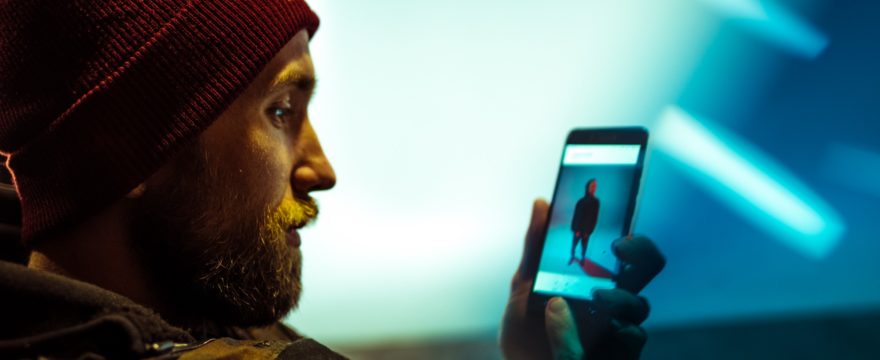This week the long awaited launch of Quibi, the new short-form, mobile-only streaming video platform, arrived to a lot of interest from both consumers and advertisers, and a closer look at the platform suggests that they may not be gearing up for the Netflix battle that the industry has set up for them.
Targeting Micro-Moments
Unlike other streaming platforms, Quibi has differentiated itself by creating bite-sized pieces of content that consumers can digest during the little gaps in their day. Instead of spending two hours on your couch binge watching a show, Quibi hopes you’ll spend your bus ride or your lunch break watching their 7–10 minute daily episodes.
This differentiator may be why the platform has accumulated $1.75 million in funding prior to launch and the attention of some of the most sought after directors and celebrities in entertainment. These short videos are specifically designed to fit into the time you would typically spend scrolling your social media feeds, which begs the question:
If Quibi isn’t going to bat against the streaming giants, are they actually entering the social media wars instead?
The Status of Busy
In the last decade, we’ve seen a dramatic shift in the types of status symbols that individuals use among their friends, family, and even strangers. What once was a focus on designer handbags and luxury cars has turned to the concept that the busier you are, the more successful you must be.
Take delivery services such as Instacart, Shipt or UberEats for example. The idea that we are too busy to grocery shop and need to have these goods delivered to us implies that our time is worth more than to spend it at the grocery store. The same goes for tech pieces like AirPods that strangers utilize to complete phone calls in public. Being busy isn’t an excuse anymore, it’s a sign of status. By deemphasizing the praise surrounding the consumption of high-priced goods, we’ve created a focus on a more socially acceptable way for individuals to #humblebrag their social status.
As individuals focuses on promoting their own personal “Status of Busy”, a spot in the niche that social media, YouTube, and TikTok have found could be integral to the success of a platform like Quibi. If they are able to work their way onto the home screen’s of their subscribers’ iPhones next to Instagram and Twitter, they could find success in the ability to draw attention away from the endlessly scrolling photos and tweets into highly produced content on a paid platform that allows advertising.
Capitalizing on their Target Audience
On top of that, the service is setting itself up to attract a group that has traditionally been difficult for big brands to connect with. By focusing on challenging social media platforms for those precious, sometimes-mindless minutes of free time and providing meaningful, quality content, Quibi is undoubtably making a play for the millennial demographic, even going as far as reviving childhood favorites of the group like Legends of the Hidden Temple, Reno 911 and Punk’d.
Seemingly taking a play from the TikTok platform, Quibi has put a huge focus on mobile-first video content by prioritizing the vertical or portrait video format. All 175 of the original shows planned for the platform’s first year will utilize a feature they’re calling “Turnstyle” which allows the viewer to gain a different perspective into the story. By watching content horizontally on their phones they can expect a traditional cinematic experience, while turning their phones vertical will result in a more character-focused experience.
Turnstyle also allows the user to feel more connected to the content and actually invokes somewhat of a “Choose Your Own Adventure” type storyline, placing the viewer into the scene with the portrait format allowing the character’s phone to take over the viewer’s screen. See the example Quibi shared below:
One show. One screen. Two perspectives.
— quibi (@Quibi) January 8, 2020
Hold the phone horizontally = Cinematic perspective.
Hold the phone vertically = The character’s phone takes over your phone. #QuibiCES pic.twitter.com/mANwJJKsGU
How will this effect the advertising industry?
With all this attention and investor power behind the platform, it will be interesting to see how advertising dollars are allocated in the future, especially with a limited availability of space. While traditional broadcast advertising delivers around 15 minutes of ads every hour, Quibi plans on offering just two and a half minutes for every hour of content. The company also said that it has already pre-sold all $150 million in available ad space for the platform’s first year to brands like PepsiCo, Google, Discover, General Mills, Anheuser-Busch, Progressive, Taco Bell, P&G and Walmart.
With streaming giants like Netflix, Disney+ and Apple TV+ forgoing the traditional advertising play, it’s not surprising to see brands jump on board the first ever mobile-first media service in hopes of reaching millennials during their on-the-go moments, but the limited availability of ad-space could prove challenging or costly for brands that don’t have the big budgets to flex.
In 2020, as the world continues adjusting to life in the Quarantine Era, it is an interesting time for a platform such as Quibi to launch and target users’ “downtime”. While we would typically be commuting to work, standing in line for lunch, or doing a quick 15 on the treadmill at the gym, we are instead in our homes for the vast majority of the day staring at computer, mobile phone, and TV screens.
On the other hand, maybe this is the ideal time for a platform like Quibi to launch, with the opportunity to lock in their subscriber base that will likely tire of scrolling their news feeds each morning, noon and night. Time will tell, but in the meantime, expect ads from the worlds biggest brands, because without sporting events and new traditional broadcast shows, they’re the only only brands that will be able to afford taking the chance on the new platform.
